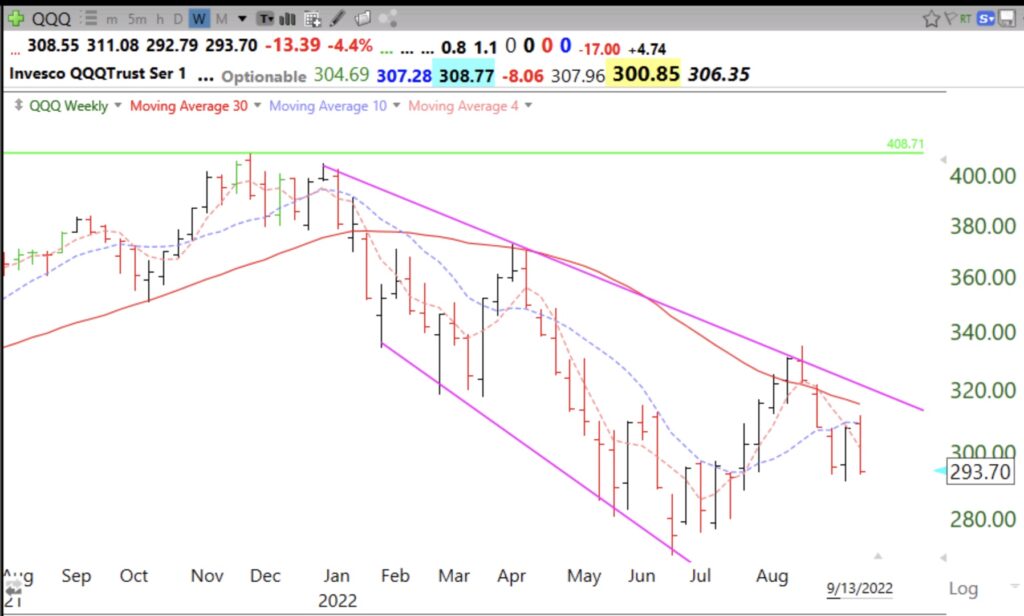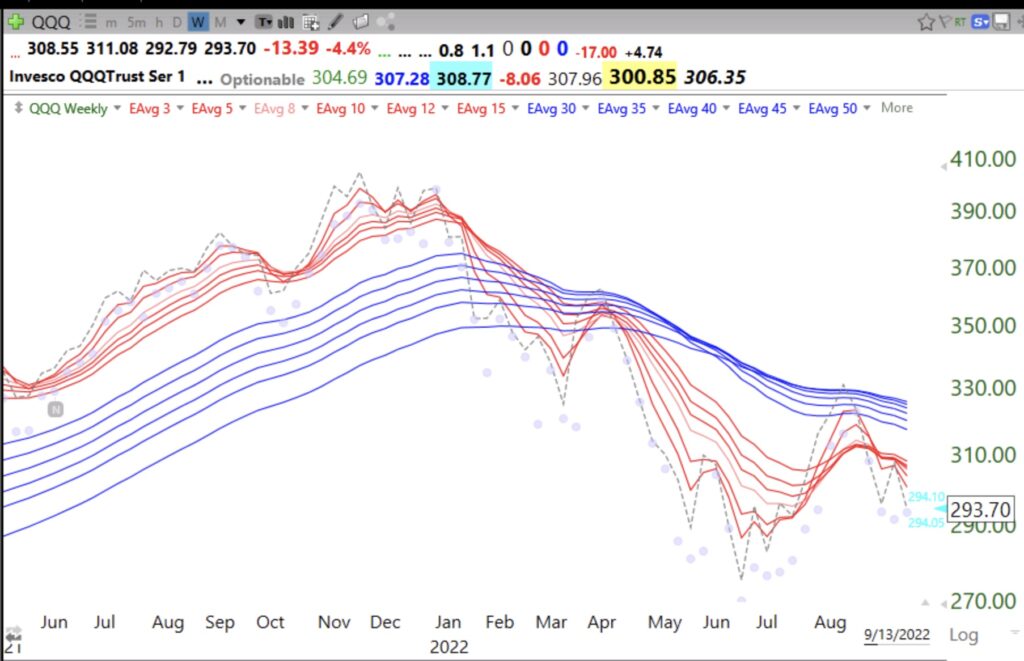The longer term down-trend for QQQ is holding. As I said on Monday, it was important for QQQ to hold above its 4 week average (purple dotted line). It has not. I am almost all in cash with a small position in SQQQ. See weekly charts below.

Weekly BWR down-trend is intact.
